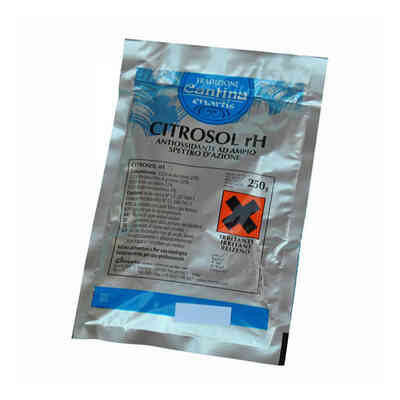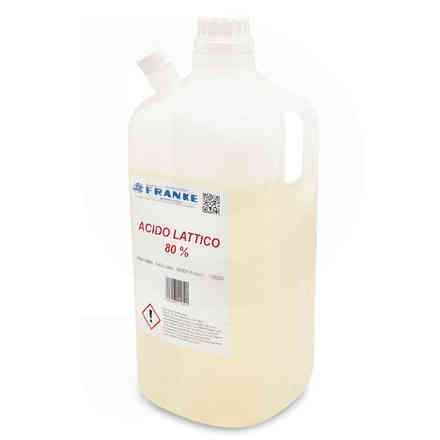Tartaric stabilizer Mannostab (500 g)
Description
Laffort - Mannostab Tartaric Stabiliser
A precision oenological treatment based on the inhibition of potassium bitartrate crystallisation, MANNOSTAB® provides a natural and non-traumatic response to the stability requirements of all wines, while fully preserving their quality.
- Pack of 500 g.
- Specific mannoprotein naturally present in wines.
- MANNOSTAB® is an environmentally friendly treatment that responds to growing environmental demands.
Stabilisation protocol, which can be standardised for wines aged more than 6 months, consists of adding Mannostab® to the wine to be stabilised in such a quantity as to inhibit precipitation.
amount to inhibit tartaric precipitation.
tartaric precipitation. This quantity must be set for each wine according to its specific natural protective colloid content and the desired degree of stability. Since the
precipitation of neutral calcium tartrate is difficult to predict, treatment with Mannostab® does not guarantee protection against calcium salt precipitates.
precipitates.
In all cases, treatment with Mannostab® should be carried out under the responsibility of an oenologist.
Application rates:
The average doses of use are between 10 and 40 g/hL. The standard dose to be used can be defined, in this context, directly by the oenologist, on the basis of the specific parameters of refinement (duration, duration and duration of use).
The standard dose to be used can be defined by the winemaker directly on the basis of the specific maturation parameters (duration, temperature, etc.) or determined by specific stability tests, which must be carried out after collage or pre-filtration.
This must be carried out after collage or pre-filtration, as any operation that modifies the wine's profile also modifies its tartaric stability. Different reference methodologies
for determining the dose of Mannostab® are available on our website.
Example of dose determination by COLD TEST:
Easily performed in the cellar:
- Dissolve 1.5 g of Mannostab® in 40 mL of distilled water.
- Place increasing volumes of the Mannostab® solution into 375 mL bottles: 0-1-1.5-2-2.5-3-4 mL. These volumes correspond to final Mannostab® doses of 0-10-15-20-25-30-40 g/hL.
- Then bring each bottle up to volume (375 mL) with the wine to be stabilised and mix thoroughly.
- Filter each sample under the same conditions as at the time of bottling (same type of cartridges or membranes); if no final filtration is planned before bottling, the sample must be under the same clarification conditions as at the time of bottling.
- Leave the samples for 6 days at -4°C.
- After 6 days at -4°C, the presence of precipitates in the bottle must be observed. It will be less intense in samples to which Mannostab® has been added depending on its efficacy and the dose added. The sample from which no crystallisation occurs will be taken into account, this corresponds to the correct dosage of Mannostab® to be applied.
- If the witness (sample with 0 addition) does not show any precipitates, the wine can be considered stable.
Treatment dose: stabilisation dose defined by one of the tests plus 5 g/hl.
Examples of results of determining treatment doses:
Treatment of wine with Mannostab®
Mannostab® must be added between the time of filtration in preparation for bottling and the final filtration, which immediately precedes bottling, at least on the afternoon before bottling. After the Mannostab® treatment dose has been determined, only SO2 and/or ascorbic acid and/or gum arabic may be added to the wine.
Preparation for treatment:
- Solubilise the required amount of Mannostab® in warm water (approx. 30°C) in the proportion of 1 to 10.
- After the product has completely solubilised (the solution will immediately become opalescent), wait about 20 minutes until it has completely clarified.
- Incorporate the solution thus prepared into the wine, preferably by means of a dosing pump.
- Thoroughly homogenise the Mannostab® solution with the wine by pumping over (recirculate at least one and a half times the volume of the tank).
In the case of new or young wines:
New or young wine: up to 3 months after the end of alcoholic fermentation. In order to eliminate the most unstable part of the colouring matter, which would jeopardise the effectiveness of the Mannostab® treatment, a preventive treatment with 20 g/hL of yeast cell walls (BIOCELL) should be carried out. After 2 weeks of contact, the yeast cell walls can be removed by racking, and the wine is ready for treatment with Mannostab®.
In the case of unfiltered wines:
Mannostab® will be added to the wine the evening before bottling, according to the operating procedures described above.
In the case of filtered wines:
Good filterability of the wine is an essential condition for successful treatment with Mannostab. Any filling of the filtering media results in a change in the colloidal structure of the wine, and/or retention of Mannostab® and therefore an immediate reduction in the effectiveness of the treatment.
- The measurement of turbidity and the filling index is essential in order to define the appropriate filtration conditions.
- The temperature of the wine at the time of treatment and final filtration must be above 15°C. Avoid any temperature change (temperature variation > 5°C) after bottling and during the following 72 hours.
- Indicative chart of filtration according to filterability indices.
- It is absolutely recommended not to exceed a filtration pressure differential of 0.8 bar (between filter inlet and outlet) in order to avoid the retention of colloids - and/or Mannostab® - after filling, and the consequent ineffectiveness of the treatment.
Storage:
Mannostab® should be stored in its original unopened packaging: within the limits of the indicated DLUO (Optimal Use By Date), in a dry and cool environment (4-20°C) After opening, the initiated bags should be consumed within 24/48 hours. The responsibility of the seller is limited to the supply of a product that complies with the specific data sheet. The application of the product is part of the processes and treatments carried out under the responsibility of the user: the seller cannot be held responsible for results that do not comply with those of the preliminary tests.
Packaging: 500 g
























